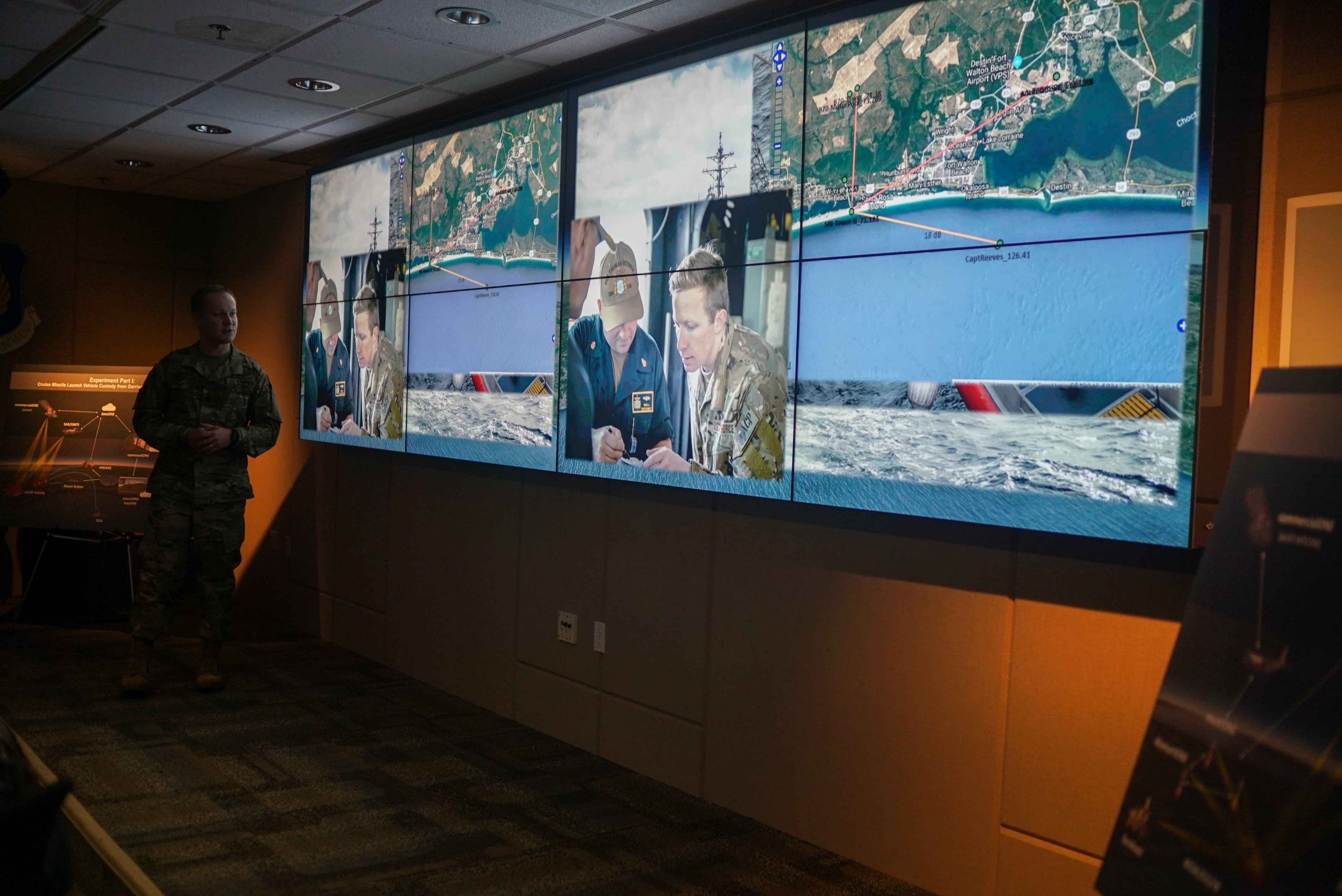The Space Development Agency will provide the unifying element in the Defense Department’s future Joint All-Domain Command and Control concept, pulling together tactical networks developed by the services with a constellation of low-Earth orbit satellites.
With the JADC2 concept, the department envisions an overarching network capable of connecting sensors to shooters regardless of where they are located. That means U.S. Air Force sensors could feed data to U.S. Army shooters, or even National Reconnaissance Office sensors could send information to U.S. Air Force shooters.
“Each of the services have their own way to incorporate [tactical networks], and JADC2 is just a way to make sure they all have the same networking infrastructure to talk to one another, essentially,” SDA Director Derek Tournear said at the C4ISRNET Conference on May 6. “We plug directly into [JADC2] as the space layer to pull all of that communication together.”
Service efforts include programs like the Air Force’s Advanced Battle Management System and the Army’s TITAN ground system. What the Defense Department wants to ensure is that programs like these have a way to share data across the armed services.
RELATED

“All of those are reliant on a way to be able to have a back end to go in space to be able to communicate across one another and across back to [the continental United States], etc. That’s where the Space Development Agency’s transport layer comes in,” Tournear said. “In fact, in the defense planning guidance, Secretary Esper put out the edict that basically said the transport layer will be the integrating aspect of JADC2 to be able to pull all of this tactical communication together in space.”
On May 1, the SDA released its solicitation for the first 10 satellites that will make up its transport layer — a space-based mesh network in low-Earth orbit. When fully developed, that transport layer will provide a global network that various sensors, shooters and tactical networks will be able to plug into for tactical communications.
A key part of that effort involves ensuring space-based sensors can feed into the services’ battlefield networks in near-real time.
Once that transport layer is placed on orbit in 2022, the SDA wants to demonstrate space-based sensor data being downlinked to a ground station, then uplinked to the transport layer for dissemination to the tactical edge via TITAN and Link 16 tactical network. But ultimately, the SDA wants to cut out the ground station and move the data directly from the space-based sensor to the transport layer via optical cross links.
That’s a stretch goal for those first 10 satellites, and the minimal viable product when the second tranche of 150 satellites is added in 2024, said Tournear.
Tournear declined to identify the SDA’s mission partners on development of space-based sensors, which will need to use optical inter-satellite cross links to plug into the transport layer.
Nathan Strout covers space, unmanned and intelligence systems for C4ISRNET.








